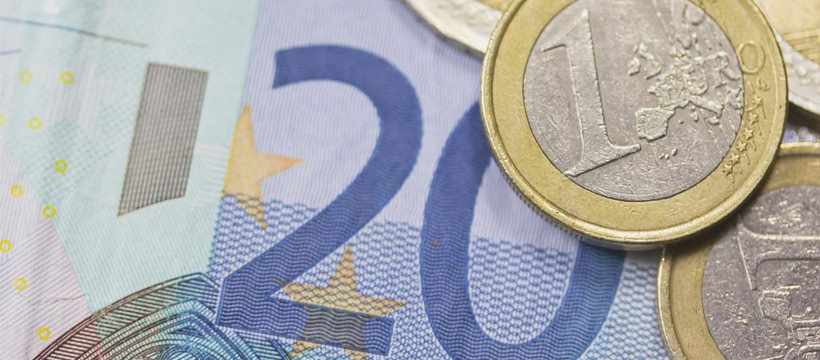The euro is, together with the dollar, the most important currency in the foreign exchange market. It's no coincidence that the most traded pair of all, and the one with the most abundant liquidity, is the euro dollar. Yet, many do not have an in-depth knowledge of the single currency, which offers more insights and curiosities than one might imagine.
Money.it has collected ten interesting, and potentially little-known, facts about the euro. Here's what they are.
When did the euro come into force?
Everyone would be inclined to answer: 2002. After all, it was precisely in that year that wallets began to fill up with euros and empty of lire. But the answer is wrong. The euro was officially born on January 1, 1999, even though for the first three years it was used only for accounting purposes and to make digital payments.
How was the euro born?
If the date of birth represents a source of ambiguity, the process that brought it to light is even more so, and truly unknown to most. The idea of the single currency had been circulating for a long time, but only with the Maastricht Treaty in 1992 did it establish that national states (except for some that refused, such as the United Kingdom) would converge towards certain parameters of real and financial economy in order to replace national currencies with a new common currency.
What is the most widespread banknote?
To answer this question, which is the result of a curiosity perhaps an end in itself, it is necessary to refer to the statistics collected by the ECB. Well, at the end of 2015 there were 18 billion and 125 million banknotes in circulation, distributed as follows:
- 500 euro banknotes: 3.4%
- 200 euro banknotes: 1.1%
- 100 euro banknotes: 11.6%
- 50 euro banknotes: 44.4%
- 20 euro banknotes: 17.9&
- 10 euro banknotes: 12.2%
- 5 euro banknotes: 9.4%
It is evident that the 50 euro banknotes are the most widespread. This should not be surprising: it is the denomination that ATMs most frequently provide when withdrawing money.
Do the structures depicted on the banknotes really exist?
This too is a curiosity for its own sake, but only apparently. The answer, in fact, conceals the idea behind the construction of Europe and the single currency. Let's clarify it right away: the structures on the banknotes, which are actually bridges, are
totally the result of imagination. The reason was revealed some time ago by the banknote designer, Robert Kalina. The objective was twofold: on the one hand, to graphically represent the feelings of harmony that would constitute the point of reference for the countries of the European community, and on the other hand, not to give in to any kind of favoritism. Hence, the bridges and, above all, imaginary bridges.
How many euros are 1,000 lire worth?
So, doing the calculations officially, that is, according to the exchange rates defined beforehand, is very simple. Since one euro is worth 1936.27 lire,
1,000 lire are worth 0.52 euros. The lira-euro (or euro-lira) exchange rate is not the result of a real economic relationship, since these two currencies never circulated together under a flexible exchange rate regime.
The only way to understand how many euros 1,000 euros really correspond to is to analyze the cost of living sixteen or more years ago, but it is a sterile calculation since in almost two decades too many things have changed, not only prices (as is normal) but also the way in which they have changed. Some goods are more expensive (see food) others less expensive (see real estate).
A truthful calculation is therefore impossible. Therefore, let's settle for the equation: 1,000 lire equals 0.52 euros.
Which countries adopt the euro?
This question is easily answered. There are 19 Member States using the euro (out of a total of 28), specifically: Austria, Belgium, Cyprus, Estonia, Finland, France, Germany, Greece, Ireland, Italy, Latvia, Lithuania, Luxembourg, Malta, Netherlands, Portugal, Slovakia, Slovenia, Spain.
Who manages and prints the euro?
The
ECB, European Central Bank, and only that, manages the euro. National central banks have no say in direct decision-making terms, although the ECB is officially an expression of the various national institutions. These, however, must comply with the directives that come from above.
The ECB acts as a classic central bank, while being totally independent of political power: it decides monetary policy, interest rates and (possible) programs for purchasing both public and private debt securities.
The EuroSystem, which acts as the mint, is responsible for physically printing the euro.
Why are there no 1 euro and 2 euro banknotes?
Actually, in the past some countries like Italy, Austria, Slovenia and Greece have asked for banknotes of this denomination to be printed. A legitimate request, since, on a perceptual level, the value of a coin is considered "lower", even if, in fact, 2 euros are equivalent to almost 4,000 of the old lire.
The request, however, was rejected as such a change would have been too costly.
How was the euro symbol born?
The "E" drawn in that particular way is nothing more than the uppercase form of the Greek letter "epsilon". It is therefore a
sort of homage to Greece, considered (certainly not wrongly), the cradle of European civilization. The two horizontal lines, finally, symbolize stability.




